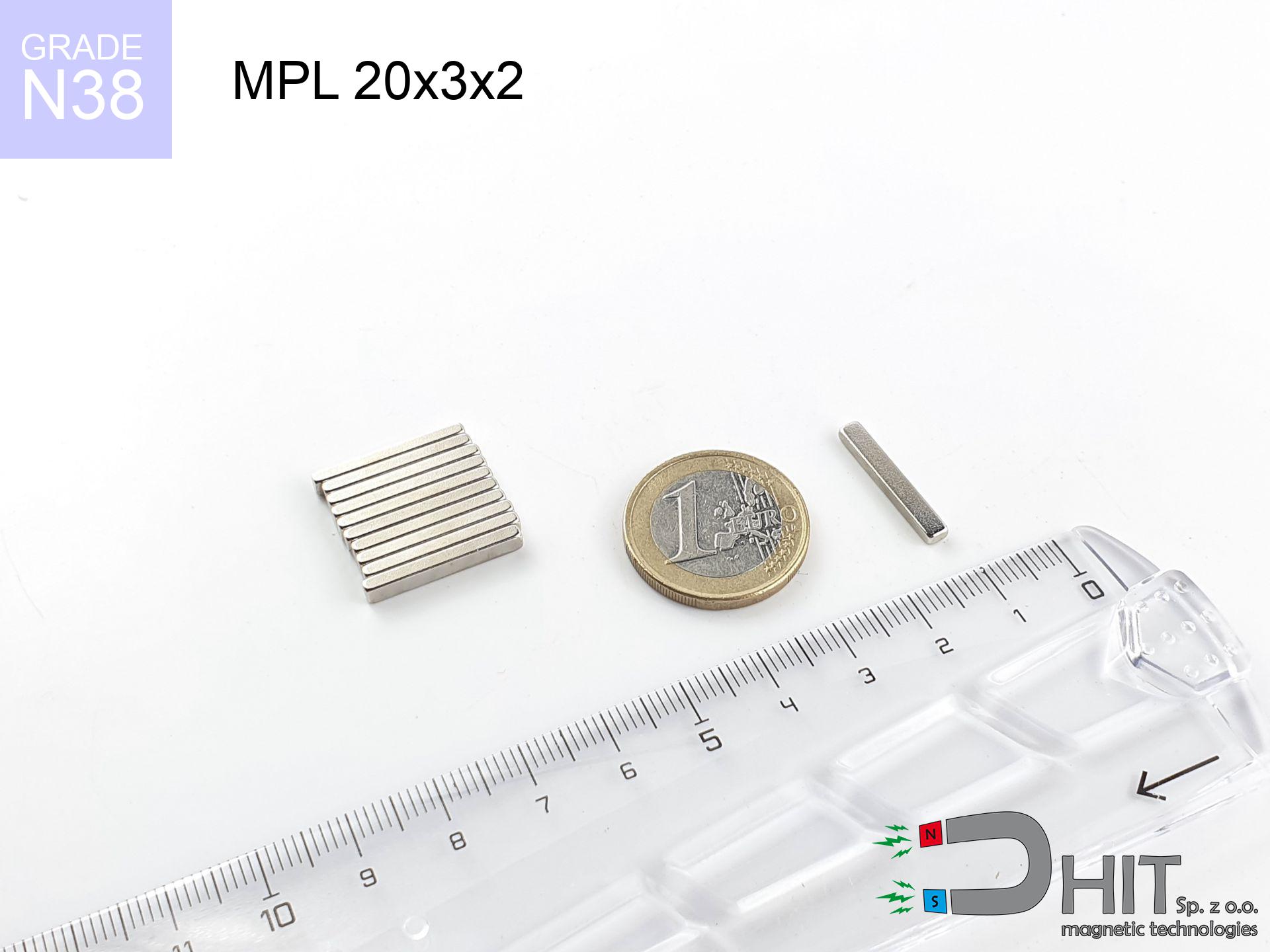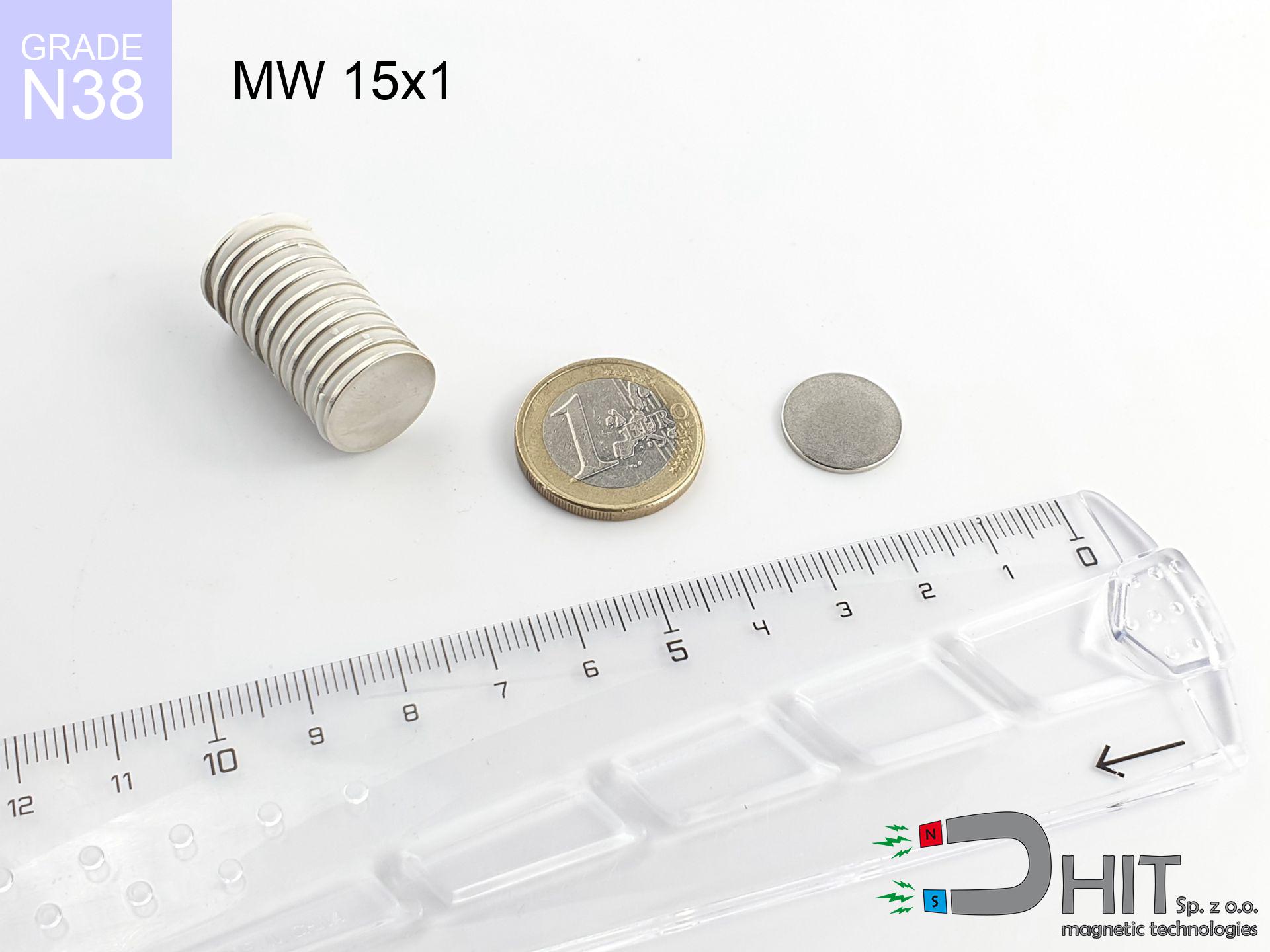SM 25x300 [2xM8] / N42 - magnetic separator
magnetic separator
Catalog no 130295
GTIN/EAN: 5906301812883
Diameter Ø
25 mm [±1 mm]
Height
300 mm [±1 mm]
Weight
1160 g
Magnetic Flux
~ 6 500 Gauss [±5%]
836.40 ZŁ with VAT / pcs + price for transport
680.00 ZŁ net + 23% VAT / pcs
bulk discounts:
Need more?
Pick up the phone and ask
+48 22 499 98 98
otherwise get in touch by means of
our online form
the contact page.
Lifting power as well as form of a magnet can be calculated on our
online calculation tool.
Same-day shipping for orders placed before 14:00.
Technical data of the product - SM 25x300 [2xM8] / N42 - magnetic separator
Specification / characteristics - SM 25x300 [2xM8] / N42 - magnetic separator
| properties | values |
|---|---|
| Cat. no. | 130295 |
| GTIN/EAN | 5906301812883 |
| Production/Distribution | Dhit sp. z o.o. |
| Country of origin | Poland / China / Germany |
| Customs code | 85059029 |
| Diameter Ø | 25 mm [±1 mm] |
| Height | 300 mm [±1 mm] |
| Weight | 1160 g |
| Material Type | Stainless steel AISI 304 / A2 |
| Magnetic Flux | ~ 6 500 Gauss [±5%] |
| Size/Mount Quantity | 2xM8 |
| Polarity | circumferential - 11 poles |
| Casing Tube Thickness | 1 mm |
| Manufacturing Tolerance | ±1 mm |
Magnetic properties of material N42
| properties | values | units |
|---|---|---|
| remenance Br [min. - max.] ? | 12.9-13.2 | kGs |
| remenance Br [min. - max.] ? | 1290-1320 | mT |
| coercivity bHc ? | 10.8-12.0 | kOe |
| coercivity bHc ? | 860-955 | kA/m |
| actual internal force iHc | ≥ 12 | kOe |
| actual internal force iHc | ≥ 955 | kA/m |
| energy density [min. - max.] ? | 40-42 | BH max MGOe |
| energy density [min. - max.] ? | 318-334 | BH max KJ/m |
| max. temperature ? | ≤ 80 | °C |
Physical properties of sintered neodymium magnets Nd2Fe14B at 20°C
| properties | values | units |
|---|---|---|
| Vickers hardness | ≥550 | Hv |
| Density | ≥7.4 | g/cm3 |
| Curie Temperature TC | 312 - 380 | °C |
| Curie Temperature TF | 593 - 716 | °F |
| Specific resistance | 150 | μΩ⋅cm |
| Bending strength | 250 | MPa |
| Compressive strength | 1000~1100 | MPa |
| Thermal expansion parallel (∥) to orientation (M) | (3-4) x 10-6 | °C-1 |
| Thermal expansion perpendicular (⊥) to orientation (M) | -(1-3) x 10-6 | °C-1 |
| Young's modulus | 1.7 x 104 | kg/mm² |
Table 1: Rod construction
SM 25x300 [2xM8] / N42
| Parameter | Value | Description / Unit |
|---|---|---|
| Diameter (Ø) | 25 | mm |
| Total length | 300 | mm (L) |
| Active length | 264 | mm |
| Section count | 11 | modules |
| Dead zone | 36 | mm (2x 18mm starter) |
| Weight (est.) | ~1119 | g |
| Active area | 207 | cm² (Area) |
| Housing material | AISI 304 | 1.4301 (Inox) |
| Surface finish | Ra < 0.8 µm | Polished |
| Temp. class | 80°C | Standard (N) |
| Force loss (at max °C) | -12.8% | Reversible loss (physics) |
| Force (calculated) | 10.6 | kg (theor.) |
| Induction (surface) | ~6 500 | Gauss (Max) |
Chart 2: Field profile (11 sections)
Chart 3: Temperature performance
Elemental analysis
| iron (Fe) | 64% – 68% |
| neodymium (Nd) | 29% – 32% |
| boron (B) | 1.1% – 1.2% |
| dysprosium (Dy) | 0.5% – 2.0% |
| coating (Ni-Cu-Ni) | < 0.05% |
Environmental data
| recyclability (EoL) | 100% |
| recycled raw materials | ~10% (pre-cons) |
| carbon footprint | low / zredukowany |
| waste code (EWC) | 16 02 16 |
View more offers
Strengths and weaknesses of rare earth magnets.
Advantages
- They virtually do not lose strength, because even after ten years the decline in efficiency is only ~1% (in laboratory conditions),
- They show high resistance to demagnetization induced by external magnetic fields,
- In other words, due to the glossy surface of nickel, the element is aesthetically pleasing,
- The surface of neodymium magnets generates a concentrated magnetic field – this is a distinguishing feature,
- Thanks to resistance to high temperature, they can operate (depending on the shape) even at temperatures up to 230°C and higher...
- Possibility of exact creating as well as optimizing to specific applications,
- Universal use in high-tech industry – they are commonly used in magnetic memories, electromotive mechanisms, diagnostic systems, and complex engineering applications.
- Relatively small size with high pulling force – neodymium magnets offer high power in tiny dimensions, which makes them useful in compact constructions
Cons
- Susceptibility to cracking is one of their disadvantages. Upon strong impact they can break. We recommend keeping them in a special holder, which not only protects them against impacts but also raises their durability
- When exposed to high temperature, neodymium magnets experience a drop in power. Often, when the temperature exceeds 80°C, their power decreases (depending on the size and shape of the magnet). For those who need magnets for extreme conditions, we offer [AH] versions withstanding up to 230°C
- Due to the susceptibility of magnets to corrosion in a humid environment, we recommend using waterproof magnets made of rubber, plastic or other material stable to moisture, when using outdoors
- We recommend casing - magnetic holder, due to difficulties in realizing threads inside the magnet and complex shapes.
- Health risk related to microscopic parts of magnets are risky, when accidentally swallowed, which becomes key in the context of child health protection. Furthermore, small components of these products can be problematic in diagnostics medical after entering the body.
- High unit price – neodymium magnets are more expensive than other types of magnets (e.g. ferrite), which can limit application in large quantities
Pull force analysis
Highest magnetic holding force – what affects it?
- on a base made of mild steel, optimally conducting the magnetic flux
- with a cross-section minimum 10 mm
- with an ideally smooth touching surface
- under conditions of no distance (surface-to-surface)
- under axial application of breakaway force (90-degree angle)
- at room temperature
Key elements affecting lifting force
- Air gap (between the magnet and the plate), as even a very small clearance (e.g. 0.5 mm) results in a drastic drop in lifting capacity by up to 50% (this also applies to paint, corrosion or dirt).
- Pull-off angle – note that the magnet has greatest strength perpendicularly. Under sliding down, the holding force drops drastically, often to levels of 20-30% of the nominal value.
- Base massiveness – too thin sheet causes magnetic saturation, causing part of the flux to be escaped to the other side.
- Material composition – different alloys attracts identically. Alloy additives worsen the attraction effect.
- Surface finish – ideal contact is obtained only on smooth steel. Rough texture create air cushions, reducing force.
- Temperature – temperature increase results in weakening of induction. Check the maximum operating temperature for a given model.
Lifting capacity testing was conducted on plates with a smooth surface of suitable thickness, under a perpendicular pulling force, whereas under shearing force the load capacity is reduced by as much as 5 times. Additionally, even a small distance between the magnet and the plate lowers the holding force.
H&S for magnets
Combustion hazard
Drilling and cutting of neodymium magnets carries a risk of fire risk. Magnetic powder oxidizes rapidly with oxygen and is hard to extinguish.
Permanent damage
Standard neodymium magnets (grade N) lose magnetization when the temperature exceeds 80°C. This process is irreversible.
Handling guide
Handle with care. Rare earth magnets act from a long distance and snap with massive power, often quicker than you can move away.
Avoid contact if allergic
A percentage of the population have a hypersensitivity to Ni, which is the typical protective layer for neodymium magnets. Extended handling might lead to a rash. We recommend use safety gloves.
Bodily injuries
Large magnets can break fingers in a fraction of a second. Never put your hand between two attracting surfaces.
Implant safety
For implant holders: Powerful magnets affect medical devices. Maintain at least 30 cm distance or request help to handle the magnets.
Choking Hazard
These products are not intended for children. Accidental ingestion of a few magnets can lead to them pinching intestinal walls, which poses a critical condition and requires immediate surgery.
Magnetic media
Do not bring magnets near a wallet, computer, or TV. The magnetic field can permanently damage these devices and erase data from cards.
Material brittleness
Protect your eyes. Magnets can explode upon violent connection, ejecting sharp fragments into the air. Wear goggles.
Phone sensors
A powerful magnetic field negatively affects the functioning of compasses in phones and GPS navigation. Maintain magnets close to a device to avoid breaking the sensors.

![Magnetic bar SM 25x300 [2xM8] / N42 Magnetic bar SM 25x300 [2xM8] / N42](https://cdn3.dhit.pl/graphics/banners/magnet.webp)
![SM 25x300 [2xM8] / N42 - magnetic separator](https://cdn3.dhit.pl/graphics/products/sm-25x300-2xm8-kud.jpg)
![UMP 97x40 [M8+M10] GW F300 Lina / N38 - search holder UMP 97x40 [M8+M10] GW F300 Lina / N38 - search holder](https://cdn3.dhit.pl/graphics/products/ump-97x40-m8+m10-gw-f300-+lina-ful.jpg)


![UI 45x13x5 [M301] / N38 - badge holder UI 45x13x5 [M301] / N38 - badge holder](https://cdn3.dhit.pl/graphics/products/ui45x13x5-m301-vud.jpg)

